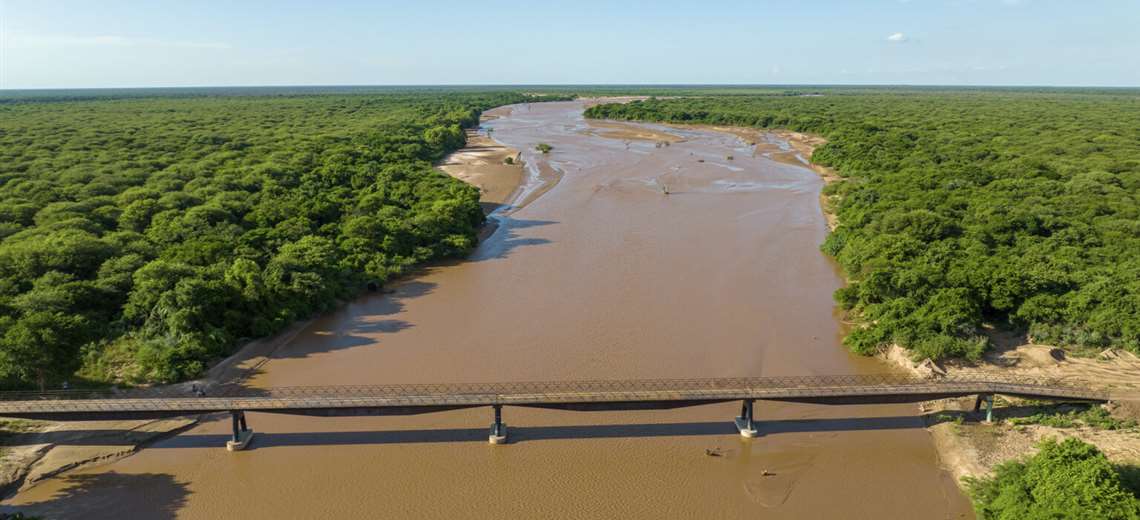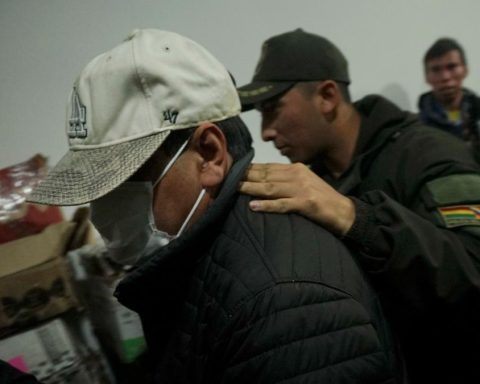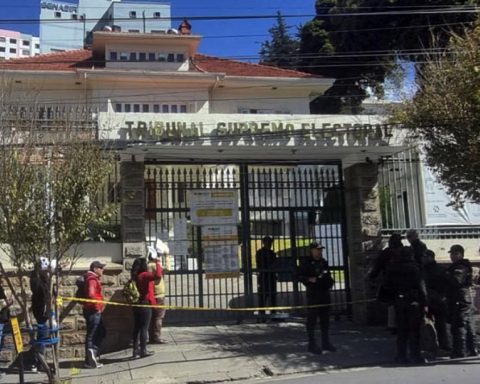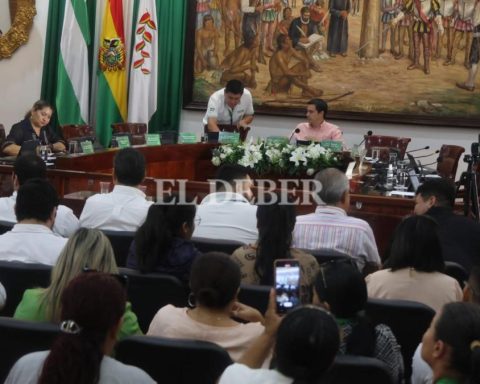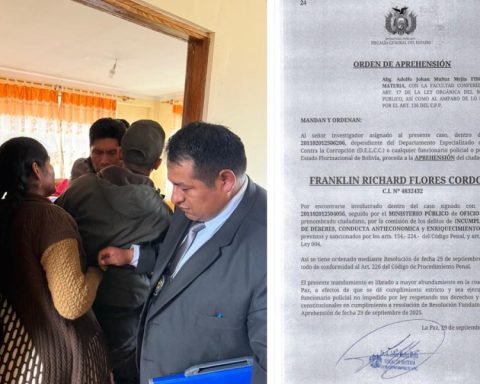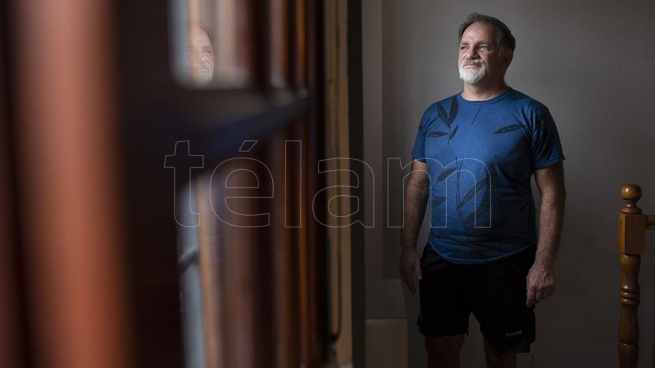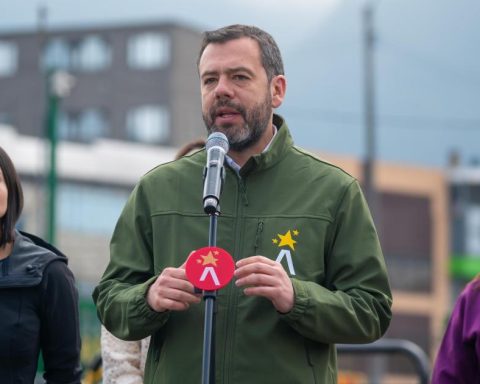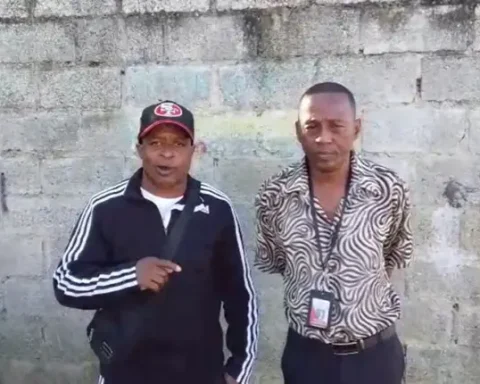New details come to light about the construction of the Mennonite bridge that crosses the Parapetí River in the Charagua region. The Secretary of Justice of the Government of Santa Cruz, Efraín Suárez, said that the Forest and Land Authority (ABT) was aware of the clearing that led to the construction of the workbeginning with the opening of a 14-kilometre road and when the bridge pilings were already built.
Suarez stated that the ABT did nothing to stop the workdespite the fact that he was aware of this construction in February 2021.
The statements are given after the Minister of Public Works, Édgar Montaño, accused the governor Luis Fernando Camacho of having responsibility in the construction of this bridge, which is considered illegal.
In past days, Camacho pointed out that the ABT and the National Institute of Agrarian Reform (INRA) would be responsible for the appearance of this bridge, an evident tug-of-war between the national and departmental authorities.
In this understanding, Suárez maintained that Minister Montaño wants to confuse the population saying that Camacho had allegedly argued that the ABT and INRA authorized the construction of said bridge, “which is false. Whate said the first authority of the department was that these authorizations from state institutions they were made under an environmental site called Ramsar”, a situation that led to the deforestation of more than 14 kilometers (km) of roads and the construction of the work.
A Ramsar site is a site wetland designated as of international importance under the Convention on Wetlands, known as the Ramsar Convention, an intergovernmental environmental treaty established in 1971 by UNESCO.
With the respective arguments, Efraín Suárez said that, according to information published on radio Charagua, ABT officials they were at the scene and observed the bridge pilings that were being built.
“This constitutes a very serious fact, although the ABT does not have the power to authorize or not authorize the construction of a bridge, within its competences, it does have the possibility of controlling accesses (…) they have the respective clearing permits”, affirmed the departmental secretary.
In the case of the illegal bridge, there is no permit to dismantle the accesses- What ABT should have done was to stop the work for not having the respective authorization, according to Suárez.
This test will refer to the complaint filed with the Public Ministry by the Government of Santa Cruz for the stoppage and environmental restitution, and try to reverse this situation, so that no further damage is caused to the Parapetí River Ramsar site.
Regarding INRA’s responsibility, Suárez stated that it is known that the lands in the area have been reorganized, and now what the agrarian institution has to clarify is whether it has delivered property titles to individuals, like the Mennonites, a fact that would be totally illegal because it is a Ramsar site.
Until noon on Monday, INRA had not responded to the request for a report in this regard.
New details come to light about the construction of the Mennonite bridge that crosses the Parapetí River in the Charagua region. The Secretary of Justice of the Government of Santa Cruz, Efraín Suárez, said that the Forest and Land Authority (ABT) was aware of the clearing that led to the construction of the workbeginning with the opening of a 14-kilometre road and when the bridge pilings were already built.
Suarez stated that the ABT did nothing to stop the workdespite the fact that he was aware of this construction in February 2021.
The statements are given after the Minister of Public Works, Édgar Montaño, accused the governor Luis Fernando Camacho of having responsibility in the construction of this bridge, which is considered illegal.
In past days, Camacho pointed out that the ABT and the National Institute of Agrarian Reform (INRA) would be responsible for the appearance of this bridge, an evident tug-of-war between the national and departmental authorities.
In this understanding, Suárez maintained that Minister Montaño wants to confuse the population saying that Camacho had allegedly argued that the ABT and INRA authorized the construction of said bridge, “which is false. Whate said the first authority of the department was that these authorizations from state institutions they were made under an environmental site called Ramsar”, a situation that led to the deforestation of more than 14 kilometers (km) of roads and the construction of the work.
A Ramsar site is a site wetland designated as of international importance under the Convention on Wetlands, known as the Ramsar Convention, an intergovernmental environmental treaty established in 1971 by UNESCO.
With the respective arguments, Efraín Suárez said that, according to information published on radio Charagua, ABT officials they were at the scene and observed the bridge pilings that were being built.
“This constitutes a very serious fact, although the ABT does not have the power to authorize or not authorize the construction of a bridge, within its competences, it does have the possibility of controlling accesses (…) they have the respective clearing permits”, affirmed the departmental secretary.
In the case of the illegal bridge, there is no permit to dismantle the accesses- What ABT should have done was to stop the work for not having the respective authorization, according to Suárez.
This test will refer to the complaint filed with the Public Ministry by the Government of Santa Cruz for the stoppage and environmental restitution, and try to reverse this situation, so that no further damage is caused to the Parapetí River Ramsar site.
Regarding INRA’s responsibility, Suárez stated that it is known that the lands in the area have been reorganized, and now what the agrarian institution has to clarify is whether it has delivered property titles to individuals, like the Mennonites, a fact that would be totally illegal because it is a Ramsar site.
Until noon on Monday, INRA had not responded to the request for a report in this regard.
;
